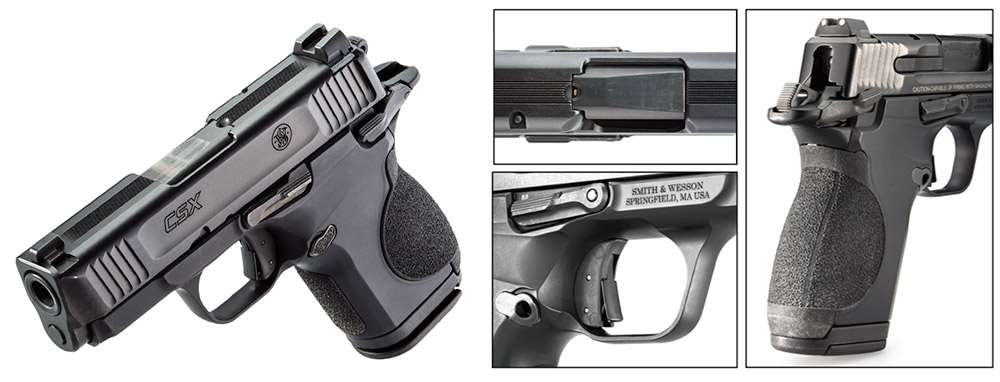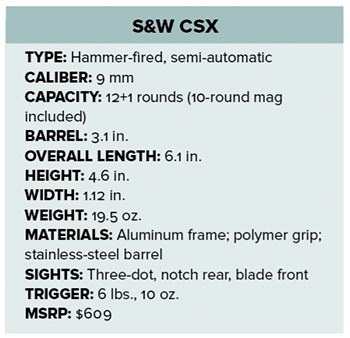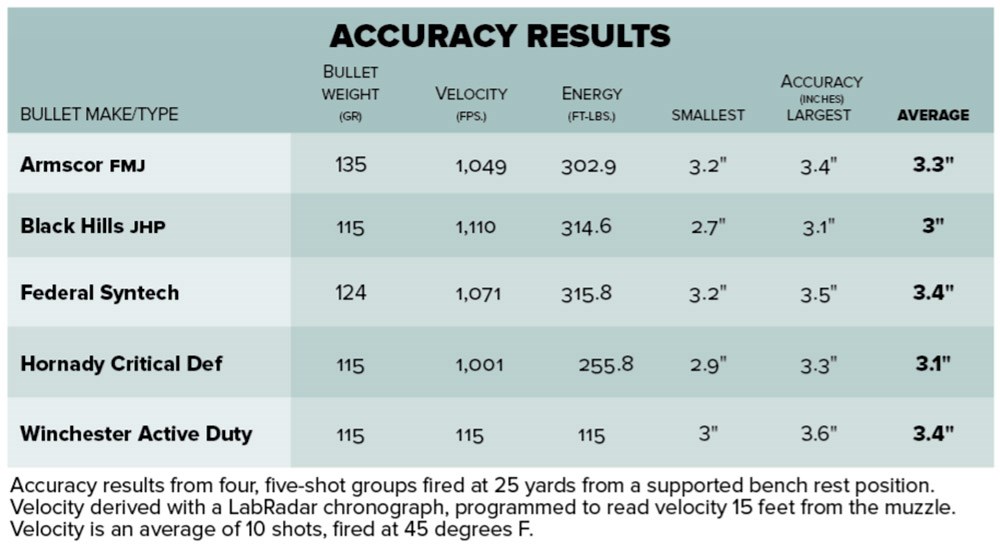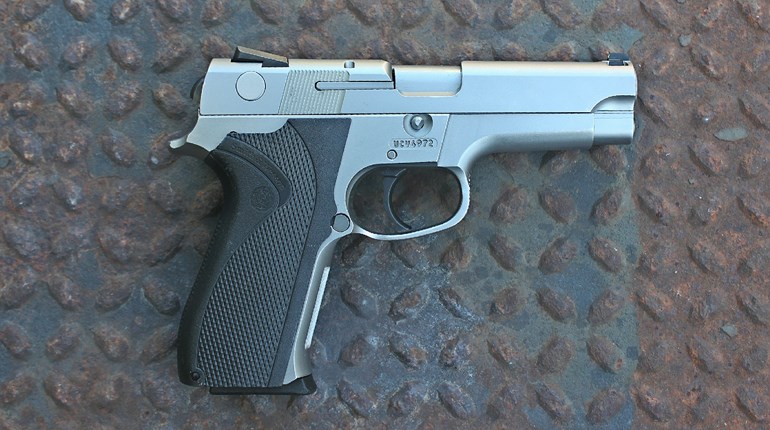
The current standard of everyday carry in pistols is a 9 mm compact with a polymer frame, a striker firing system and a slide machined for a red-dot optic. Also, the current paradigm lacks a thumb safety. All of which makes the S&W CSX something of an outlier.
First, the CSX’s frame is aluminum rather than polymer. This means the rails the slide runs on are not metal inserts held in by the injected polymer or pinned in place by the locking block or ejector assembly; they are metal rails that are integral to the frame. Thus, the trigger pivot pin and the hammer pivot pin are attached to the frame, and aluminum doesn’t flex like polymer. This all leads to a cleaner, crisper trigger pull.
That brings us directly to the hammer. (We’ll get back to the frame in a bit.) A hammer on a 9 mm pistol? Isn’t that passé, so 20th century? Perhaps, but it is a design that has distinct advantages. For one, a hammer makes it easier for those who don’t have a rock-crushing grip to cycle the slide. You don’t have to overcome both the recoil spring and the striker spring to cycle the slide—just apply the safety, then thumb-cock the hammer, then pull the slide back. And, yes, the thumb safety can be pressed up into the “safe” position, even with the hammer down, and the hammer can still be cocked and the slide cycled. As a bonus, S&W machines the slide with what they call “EZ tabs,” raised portions at the rear, to provide an additional gripping surface. These small wings make holding on while retracting the slide easier.

The slide does not have a space for an optic; this is simply because, when you have a micro-compact pistol, adding bulk is not always what you want. For many of those who everyday carry, iron sights—which need no batteries—are just fine. The sights ride in transverse dovetail slots, so if you don’t like the three-dot sights S&W equips the CSX with, you can easily have them exchanged by a competent gunsmith for whatever sights you prefer.
The rear of the barrel hood is notched, matching the slide at the breechface, so it can be used as a loaded-chamber indicator. Peer down, and if you see brass, you have a round in the chamber. (If you favor ammunition loaded in blackened cases, you’ll obviously need to be more proactive to be certain of your gun’s condition, but then, you always should be.) The ejection port is lowered and chamfered, so empty brass should always exit smoothly, and loaded rounds have plenty of clearance when you are unloading. The extractor is a sturdy, spring-loaded hook that gets a good bite onto the rim of the cartridges.
The front of the slide is contoured to make it easier to slip into a holster, and the front edges of the frame are contoured as well. So, when re-holstering (remember, there is never a need to hurry the process; “speed holstering” is nothing but dangerous) the front of the CSX going into the holster acts like a funnel.
 The frame, though aluminum, has an interchangeable polymer panel on the backstrap area, so you can adjust the size to your hand. The frontstrap is textured for a non-slip grip.
The frame, though aluminum, has an interchangeable polymer panel on the backstrap area, so you can adjust the size to your hand. The frontstrap is textured for a non-slip grip.
You will notice that the CSX does not have an accessory rail on the frame. While some find a rail useful, to mount a light or laser, a lot of shooters find it not at all useful, since they don’t plan on affixing a light to their ultra-compact pistol.
The thumb safety and slide-stop lever are both ambidextrous, with controls on both sides of the frame. The CSX is readily used by right and left-handed shooters, or with either hand. The magazine release is not ambidextrous; however, what S&W has done here is simple: They provide two magazine releases in the box with your CSX, one each for right- and left-handers. You’ll need a small screwdriver to make this change, but the process is very simple.
Each CSX comes with two magazines. The flush-fit magazine holds 10 rounds, while the extended one holds 12. Those who are focused on deep concealment will use the 10-round as the carry magazine, and the 12-round as the reload. But those with larger hands will find the CSX, with the 12-round magazine inserted, to be easier to shoot well.
The trigger has a small, levered tab in its face—another safety device. If the tab is not depressed (by your trigger finger) then the trigger won’t travel far enough to release the hammer. The CSX does not have a magazine safety, and it can be fired with the magazine removed.
If you simply glance at the trigger pull weight, you might be ready to dismiss the CSX out of hand. Don’t. While the weight seems high, it does not feel that heavy in use; in fact, after first inspecting it, I guessed the trigger pull weight would come in just under five pounds. As clean as the trigger pull felt, I found it surprising when the digital scale read in the upper six-pound region. Moderately heavy but clean is a perfect description of the trigger on a pistol for everyday carry.
Now, the CSX should be expected to have some recoil—the price for being ultra-compact and lightweight—and with the hottest defensive ammunition, the CSX is going to be snappy in felt recoil. But with softer practice ammunition, or with competition-oriented ammunition, the CSX is pleasant to shoot, and plenty accurate for being so small. The generous tang on the frame helps here, as the tang provides plenty of leverage to resist muzzle rise and keep the CSX under control.
In testing, the CSX performed exactly as expected. There were no failures to fire, extract or eject. The slide locked open on both magazines after the last round had been fired. Magazines dropped free when the release was pressed. The EZ tabs proved useful in working the slide. While the backstrap exchange is simple, I didn’t swap them, as I have found that all backstraps are the same to my hands. Unless the smallest is incredibly small, or the largest is almost orthopedic, they make no difference to me; however, they may make a difference to you, so, once you’re accustomed to the CSX, you might spend a few practice sessions trying out the various sizes, with a timer and targets, to assess any changes in performance.
As a small backup gun or as an ultra-compact, deep-concealment main gun, the CSX is a solid choice. Given its size and capacity, plus its clean trigger, I suspect S&W will be selling a lot of these.


































